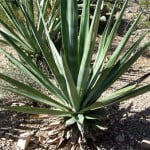
Common Name: Juniper
Scientific Name: Juniperus species
Family: Cupressaceae (the Cypress family)

Common Species:
- Common Juniper (Juniperus communis) – large shrub to small tree
- Alligator Juniper (Juniperus deppeana) – small to medium-sized tree
- Syrian Juniper (Juniperus drupacea) – medium-sized tree
- Creeping Juniper (Juniperus horizontalis) – groundcover
- One-Seed Juniper (Juniperus monosperma) – medium-sized tree
- Western Juniper (Juniperus occidentalis) – medium-sized tree
- Rocky Mountain Juniper (Juniperus scopulorum) – small to medium-sized tree
- Eastern Juniper or Eastern Redcedar (Juniperus virginiana) – small to medium-sized tree

Description:
The Junipers are a group of evergreen plants, from small shrubs to tall trees, well known for their berries which are eaten fresh, used as a spice, and are famously used to give gin its characteristic flavor. Junipers are used around the world for landscaping, and J. virginiana (a.k.a. “red cedar”) is used extensively in wood working and is notable for its aroma. These plants can be hedges, windbreaks, groundcovers, and sources for wood, to name but a few of their uses. A versatile plant for the Forest Garden.

History:
The Junipers are a genus of plants containing between 50-70 species. Native to the northern hemisphere, they are likely the most widespread evergreen plant in the world. Prehistoric people used these shrubs and trees for wood, fuel, and food, and their popularity has never ceased.
Trivia:
- Juniper “berries” are actually modified cones… yes, like the typical pine cones.
- Most berries are blue when ripe, but some species produce red to orange berries.
- Juniper berries are the primary flavoring in gin. The name “gin” comes from the Dutch word for juniper, geniver.
- Most Junipers have two types of leaves: needle-like on young or new growth, and scaled leaves on older growth.
- Most Juniper berries take about 18 months to ripen.









